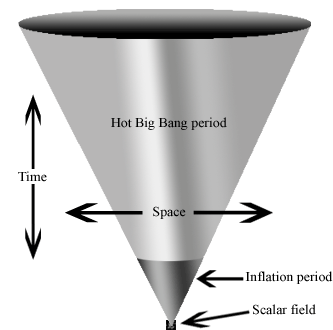inflationary model

The inflationary model is a modified version of the Big Bang theory of the origin of the universe that allows for a brief period, when the universe was only about 10-35 sec old, in which the expansion of spacetime took place at a vastly accelerated rate. The huge inflation of space was driven by energy released from a separation of two forces that had previously been one: the strong force and the electroweak force. For around one hundred million trillion trillionth of a second, the universe grew many times faster than the speed of light (not in defiance of Einstein's special theory of relativity. However, because nothing was traveling through space at a speed greater than that of light) taking it from a size unimaginably smaller than an atomic nucleus to about the size of grapefruit. In the process, tiny isotropic (small in every direction) regions of the early universe were inflated to become larger than the observable universe. This provides a satisfactory solution to both the flatness problem and the horizon problem.
The latest version of inflation, known as chaotic inflationary theory, posits that the universe grew out of a quantum fluctuation in a pre-existing region of spacetime and that other universes could do the same from regions within our universe today. A new universe, or "babyverse," formed by this budding process, would have its own set of physical laws and material particles.


